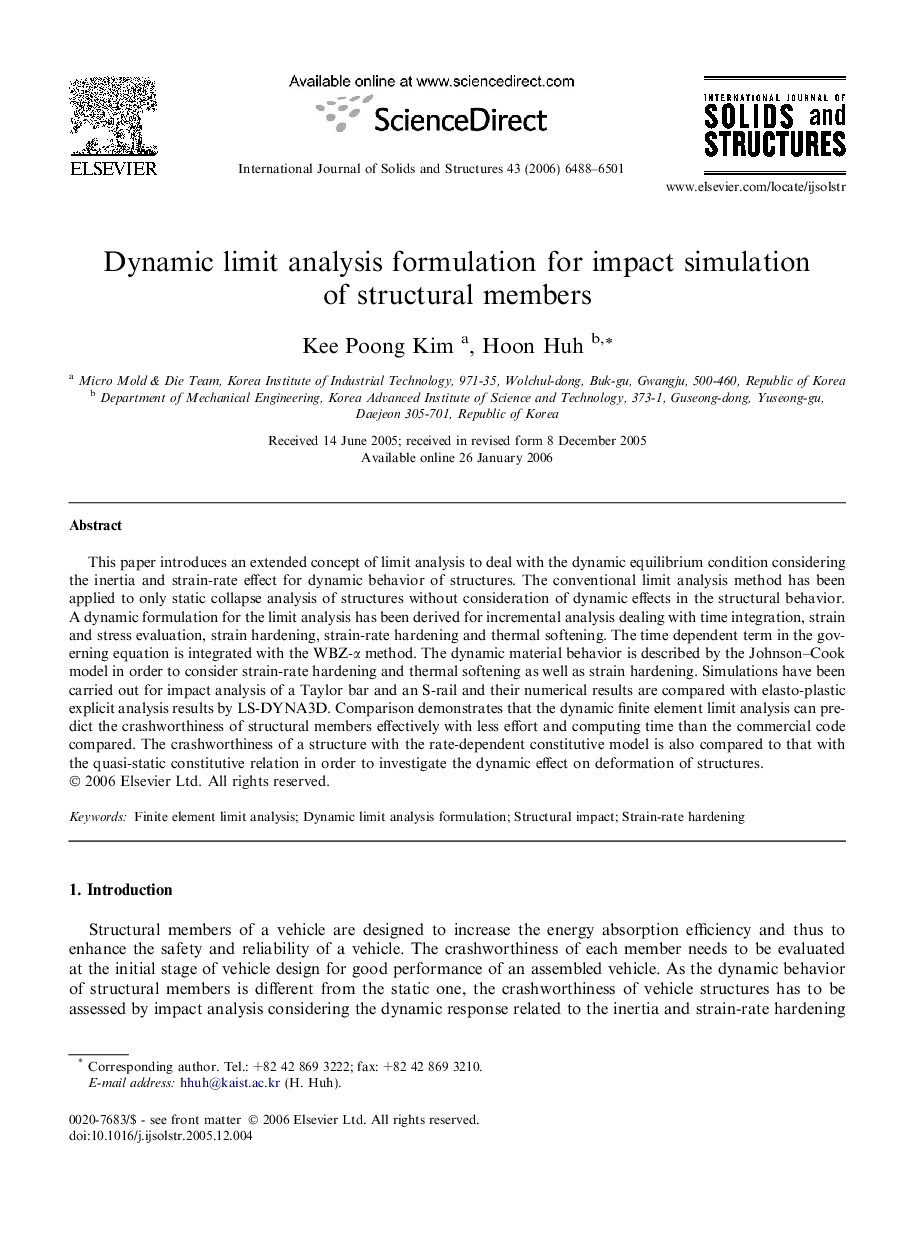| Article ID | Journal | Published Year | Pages | File Type |
|---|---|---|---|---|
| 280486 | International Journal of Solids and Structures | 2006 | 14 Pages |
This paper introduces an extended concept of limit analysis to deal with the dynamic equilibrium condition considering the inertia and strain-rate effect for dynamic behavior of structures. The conventional limit analysis method has been applied to only static collapse analysis of structures without consideration of dynamic effects in the structural behavior. A dynamic formulation for the limit analysis has been derived for incremental analysis dealing with time integration, strain and stress evaluation, strain hardening, strain-rate hardening and thermal softening. The time dependent term in the governing equation is integrated with the WBZ-α method. The dynamic material behavior is described by the Johnson–Cook model in order to consider strain-rate hardening and thermal softening as well as strain hardening. Simulations have been carried out for impact analysis of a Taylor bar and an S-rail and their numerical results are compared with elasto-plastic explicit analysis results by LS-DYNA3D. Comparison demonstrates that the dynamic finite element limit analysis can predict the crashworthiness of structural members effectively with less effort and computing time than the commercial code compared. The crashworthiness of a structure with the rate-dependent constitutive model is also compared to that with the quasi-static constitutive relation in order to investigate the dynamic effect on deformation of structures.
